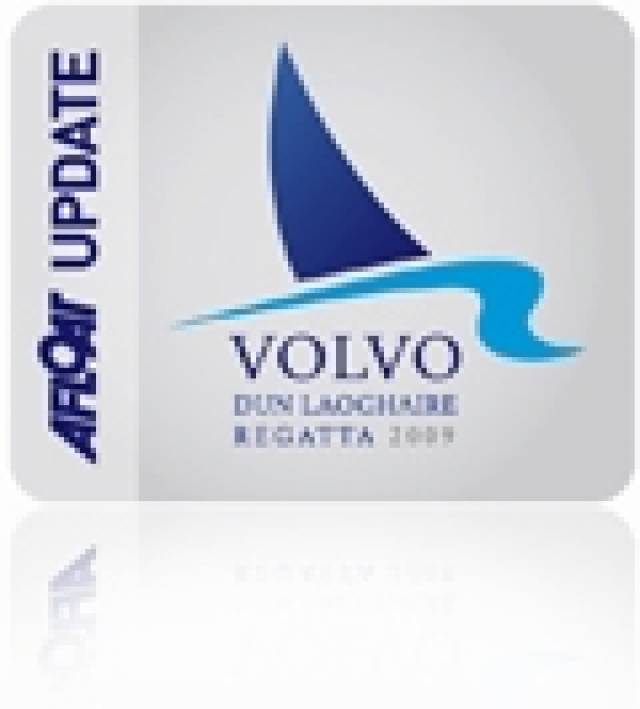#vdlr2013 – Ireland's largest sailing event reaches the half way stage tomorrow (Saturday) and already a number of potential champions are emerging in cruiser, one design and dinghy classes in the Volvo Dun Laoghaire regatta on Dublin Bay.
With all classes aiming for either two or three races today, results in the 390-boat fleet were still being computed in some classes at 7pm last night.
It is clear, however, that Nigel Bigg's Humphrey's half tonner Checkmate XV had made short work of today's windward–leeward course to be the clear leader in the 26-boat IRC2 division, counting a 1,2,1.
The Royal St. George national champion is followed by Rob Humphrey's design, the Welsh three quarter tonner, Scenario Encore (Stuart and Julie Fitton).
There was relief this morning for organisers and competitors alike in this four day event that the strong inversion that has been partly responsible for the lack of sea breezes has moved away, allowing for seven to 12–knot southerly wind.
It meant that despite a flukey start, so far the regatta has completed the bulk of the schedule for all its 25 classes on eight separate Dublin Bay courses but as any sailor in contention will testify there is still a long way to go in this biennial event.
In Class zero, a collision has cost early leader Crazy Horse from Howth dearly with the Mills 36 design being withdrawn.
In Class 1, the X-yachts works boat Bon Exemple - the Irish National Champion – was leading Now or Never III, a visiting Mat 1010 from Scotland in a fleet of 16 after two races sailed.
Likewise, after two races in the J109 class, racing today on the Howth course, John Maybury still leads but Howth entry Storm (Pat Kelly) took a well earned race win this morning. As well as VDLR honours, the J109 crews are also racing for the Irish title.
Jean Mitton's Beneteau 31.7 has moved in to the lead with two race wins today in the 17-boat fleet that includes Isle of Man champion entry, Eauvation, skippered by Jason Corlett of Douglas Bay.
Three wins from five races gives Ian Mathews and Chris Russell of the National Yacht Club the lead by 4 nett points in the 19-boat Flying Fifteen class from club mates Niall Meagher and Nicki Matthews.
Racing as a class for the first time, the Beneteau 21s (coined the new Dublin Bay 21 in WM Nixon's recent blog) sailed three races today on the North course in the vicinity of New Ross buoy. The 14-boat fleet is led by Royal Irish yacht Chinook (Andrew Bradley and Paul Morgan) who have a margin of three points over clubmate Joe Conway in Yikes.
In the dinghy fleets, the Fireballs enjoyed two close races and a third race which was more spread out. After five races sailed Clancy Brothers have broken the tie for first place but only by a point from Brian Byrne and Stephen Campion.
Accoding to forecasters, it now looks like the high pressure will slowly slide off to the south west over the weekend it will allow for slightly stronger thermal breezes to develop for racing tomorrow and the final races on Sunday morning.
Disappointingly for a new division, after two days of racing there were still no results posted for the IRC coastal class by 7pm this evening.
There are reported glitches too in the computation of the PY results.































































